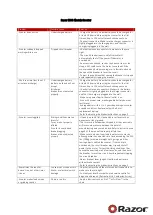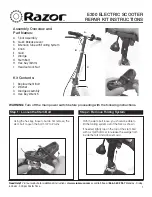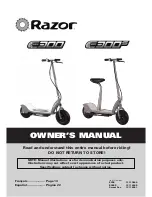
18
Currie Tech
Technical and Customer Service: +1 800-377-4532
6 Fit indd
Fit
Standover height
Section 3:
Fit
NOTE: Correct fit is an essential element of bicycling safety, performance and
comfort. Making the adjustments to your bicycle which result in correct fit for
your body and riding conditions requires experience, skill and special tools.
Always have your dealer make the adjustments on your bicycle; or, if you have
the experience, skill and tools, have your dealer check your work before riding.
If your bicycle does not fit properly, you may lose control and fall. If your new
bike doesn’t fit, ask your dealer to exchange it before you ride it.
Standover height
Diamond frame bicycles
Standover height is the basic element of bike fit. It is
the distance from the ground to the top of the bicycle’s
frame at that point where your crotch is when strad
-
dling the bike. To check for correct standover height,
straddle the bike while wearing the kind of shoes in
which you’ll be riding, and bounce vigorously on your
heels. If your crotch touches the frame, the bike is
too big for you. Don’t even ride the bike around the
block. A bike which you ride only on paved surfaces
and never take off-road should give you a minimum
standover height clearance of two inches (5 cm). A
bike that you’ll ride on unpaved surfaces should give
you a minimum of three inches (7.5 cm) of standover
height clearance. And a bike that you’ll use off-road should give you four inches (10
cm) or more of clearance.
Step-through frame bicycles
Standover height does not apply to bicy-
cles with step-through frames. Instead, the
limiting dimension is determined by saddle
height range. You must be able to adjust
your saddle position as described in “Saddle
position” on page 19 without exceeding
the limits set by the height of the top of the
seat tube and the ”Minimum Insertion” or
“Maximum Extension” mark on the seatpost.
fig. 3-1
















































